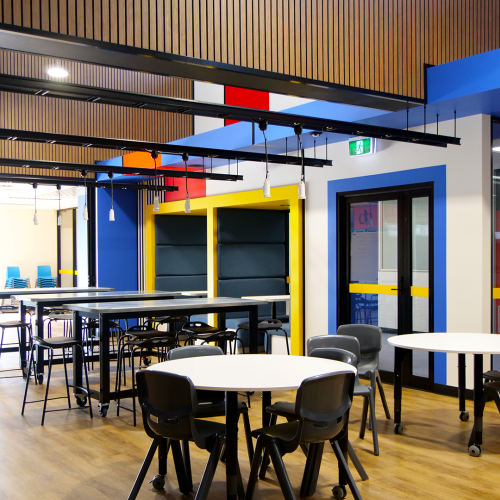Victor Harbor Senior High School
- Client:
- Department of Transport, Energy and Infrastructure
- Location:
- Victor Harbour, South Australia
- Features:
- + Stormwater re-use (toilets and irrigation)
+ Solar energy production and solar hot water
+ Natural ventilation
+ Minimization of artificial lighting by use of light sensors and maximizing low-glare natural light
+ Low water usage toilets
+ Low VOC carpets
+ Evaporative cooling system
Located 80km south of Adelaide on the Fleurieu Peninsula, Victor Harbor High School is the first state high school to comprehensively employ principles of personalised learning into the design of its senior school campus. The formality of the traditional classroom is replaced with a more open, socially interactive, wireless technology environment comprising of flexible spaces, student commons, learning streets, courtyards and piazzas. The learning environment will be one where students and teachers can socialise, exchange thoughts and ideas and acquire information either sitting at a desk, lounging on a sofa, on the carpet or on a bench under a tree.
As the social and economic benefits of ensuring that no student is left behind become obvious, the teacher’s classroom is giving way to an information ubiquitous, multi-faceted learning environment tuned to address the needs of each individual student. The Information Revolution and student-centred approach to learning are replacing the traditional ‘Henry Ford production-line’ method of teaching.
The driver of this new approach is a flexible, open learning philosophy where a more collaborative environment encourages cross communication between students and teachers alike. Technology forms a key part of this approach, with teaching methods shifting from paper-based learning to computers, wireless networks and digital IT information transfer.











